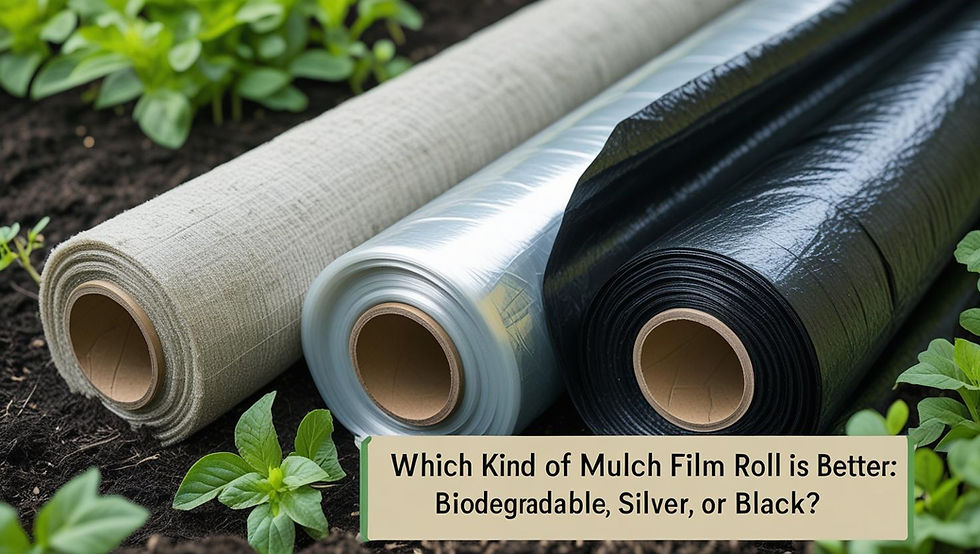Benefits of Using Lamination Rolls in Flexible Packaging
- Rahul Solanki
- Jul 9
- 4 min read

Selecting the appropriate material is essential for sustainability, brand appeal, and product safety in the cutthroat packaging market of today. The lamination roll, one of the most important parts of contemporary packaging, has transformed flexible packaging in a variety of sectors, including retail, food, and pharmaceuticals. Lamination roll products are at the forefront of the expanding demand for flexible packaging solutions. We'll look at how lamination rolls improve packaging performance in this guide, especially when paired with adhesive lamination and materials like pharmaceutical-grade poly.
Lamination technology offers many advantages, from increasing shelf life to producing aesthetically pleasing packaging. We'll go into great detail in this post about the importance of lamination roll products, how adhesive lamination improves functionality, and why materials like pharmaceutical-grade poly are best suited for specific uses.
What is a Lamination Roll?
Definition and Purpose
A lamination roll is a continuous film sheet used to add a protective layer to another material. It is frequently composed of plastic, paper, or aluminium. This film ensures increased durability, moisture resistance, and print retention and can be applied using either pressure-sensitive or thermal methods.
Common Materials Used
PET (Polyethylene Terephthalate)
BOPP (Biaxially Oriented Polypropylene)
PE (Polyethylene)
Pharma grade poly (especially in healthcare and sterile packaging)
These materials can be layered together in multiple combinations using adhesive lamination, which allows each layer to contribute specific properties.
Key Benefits of Lamination Rolls in Packaging
Enhanced Protection
Lamination rolls serve as a barrier against dust, oxygen, moisture, and ultraviolet light. This is particularly important for sensitive materials like medications or perishable goods like food.
Improved Product Shelf Life
By forming an efficient barrier, flexible packaging with lamination rolls prolongs the shelf life of foodstuffs, cosmetics, and medications. This lessens waste, spoiling, and product returns.
High-Quality Print Preservation
The printed design underneath is protected by the outer lamination layer, which prolongs its scratch resistance and aesthetic appeal. This advantage improves in-store shelf presence, customer experience, and branding.
Versatility in Applications
Lamination rolls are suitable for various sectors:
Food packaging
Pharmaceuticals (especially pharma grade poly based items)
Industrial and electronics packaging
Heat and Chemical Resistance
Films can be bonded to provide resistance to particular chemicals or high temperatures through adhesive lamination, which is a crucial need for packaging intended for use in laboratories and medical settings.
The Role of Adhesive Lamination in Lamination Rolls
What is Adhesive Lamination?
Using adhesives to join several substrates is known as adhesive lamination. Depending on the final application, solvents, solvent-less, or water-based adhesives are used in the process. Each layer will contribute a distinct functional property, such as printability, heat resistance, or barrier strength, thanks to this bonding.
Benefits
Enables multi-layer structures
Retains flexibility while improving durability
Offers tailored barrier protection
When producing pharmaceutical-grade poly packaging, where adherence to hygienic and protective regulations is essential, adhesive lamination is particularly helpful.
Importance of Pharma Grade Poly in Flexible Packaging
What is Pharma Grade Poly?
Pharma grade poly is a high-purity polyethylene material certified for medical and pharmaceutical use. It ensures:
Non-toxicity
Chemical resistance
High barrier to contaminants
Integration with Lamination Rolls
Pharma grade poly makes the perfect barrier package when paired with lamination roll technology, safeguarding sterile goods like medications, test kits, and surgical instruments.
Environmental Benefits of Using Lamination Rolls
Lightweight Packaging
Compared to rigid containers, flexible packaging with lamination rolls uses fewer materials, which lowers shipping weight and storage space.
Recyclability and Biodegradability
Lamination roll options that are recyclable or biodegradable are now produced by manufacturers. The use of environmentally friendly water-based adhesives is another innovation in adhesive lamination.
Lamination Rolls in Emerging Markets
Lamination rolls are becoming more and more popular worldwide, particularly in Asia and Latin America, where food delivery services and e-commerce are flourishing. Lamination is perfect for expanding markets because it is inexpensive, long-lasting, and customisable.
Innovations in Lamination Roll Technology
Smart Packaging
RFID or QR code-enabled lamination rolls facilitate consumer interaction and supply chain tracking.
Sustainable Laminates
creation of multilayer laminates that are recyclable and use adhesive lamination without sacrificing functionality.
Anti-Microbial Laminates
especially useful when utilising pharma-grade poly in the food and pharmaceutical industries.
Choosing the Right Lamination Roll for Your Application
Factors to Consider
Product sensitivity (e.g., moisture or oxygen)
Shelf life requirements
Print durability
Regulatory compliance (especially for pharma grade poly)
Collaborating with Experts
Collaborate with a reliable packaging supplier to use adhesive lamination that is appropriate for your industry to create the ideal lamination roll structure.
FAQs
What is the typical thickness of a lamination roll?
Depending on the layers and application, it can range from 10 to 100 microns.
Are lamination rolls recyclable?
Indeed, recyclable materials are now used to make a large number of lamination roll films. The structure and materials bonded by adhesive lamination, however, determine this.
Can I use pharma grade poly in food packaging?
Pharma-grade poly is intended for medical applications, but because of its purity, it can also be used in high-barrier food applications.
What industries benefit most from adhesive lamination?
The strength and adaptability of adhesive lamination benefit industries like food, electronics, cosmetics, and pharmaceuticals.
How do I choose between single- and multi-layer lamination rolls?
The protection requirements of your product will determine this. Adhesive lamination enables multi-layer rolls, which perform better.
Conclusion
Lamination roll products are at the forefront of the fast-paced evolution of flexible packaging. They provide a potent fusion of sustainability, style, and utility. The market appeal and shelf life of your product can be improved by using the proper lamination roll and adhesive lamination techniques, regardless of your industry food service, healthcare, or consumer goods.
Pharma grade poly offers unparalleled assurance and safety, particularly in regulated industries, making it a valuable component of your flexible packaging strategy. Lamination roll products are positioned to take the lead in high-performance, environmentally friendly packaging in the future with further innovation.



Comments